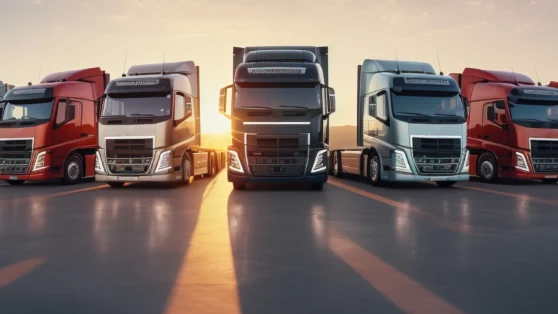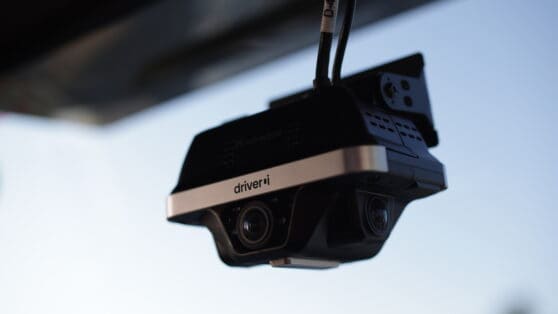Vision-based driver safety technology is becoming the standard in commercial fleets. With the amount of on-road incidents that occur every day, managers need full visibility to have a clear understanding of driver performance and behavior, so they can know exactly what’s happening and how to respond when incidents or violations occur on the road. It’s also a great tool to recognize positive driving.
Advanced fleet management software can help with risk management, insurance costs, unsafe driving and driver retention. Installing a dashcam or another type of camera will only go so far in protecting your fleet — drivers need AI-enabled technology to function optimally. Here’s why:
Cameras Alone Don’t Tell the Whole Story
Relying on cameras alone is not only inconvenient, but it’s also inefficient. With most systems, you have to retrieve the footage from the fleet vehicle, download it and analyze hours of captured film. Most of the time, this is only done post-collision to determine whether the driver is the one at fault. It leaves no room for preemptive measures that could have possibly prevented the accident.
Aside from that, most camera technology is trigger-based, meaning that the camera only turns on if triggered by an event— usually something like a hard brake or collision. The footage collected will likely be in reaction to an accident, and won’t show the full context of the events leading up to that incident.
Using camera technology alone is virtually ineffective in protecting your fleet, but coupled with the right technology, it can lead to correction of unfavorable driving habits, offer full context when incidents do occur and reinforce positive driving.
Optimizing Fleet Performance with AI-Enabled Technology
Although cameras are necessary when deciding which technology will best impact your fleet’s success, it shouldn’t be the only factor you take into consideration.
With the rapid enhancement of vision-based technology, there are now options that allow for real-time analysis of driving, immediate alerts when negative driving behavior happens, and the opportunity for instant review and coaching of on-road events.
When researching which technology to use for your fleet, make sure it has the following:
Ability to Capture the Entire Picture
As mentioned above, most fleet safety technology is trigger-based, meaning that a hard brake or other indicator has to occur to trigger the camera, which will then start recording.
That means you only get half the story. You may have footage of your fleet driver rear-ending another car on the road, but what you might not have seen is the other car jumping into your driver’s lane to cut them off and then hard-braking to intentionally induce a collision.
Driveri’s ability to capture and analyze 100% of driving time removes all uncertainty in any scenario, providing the full picture and the whole sequence of events. This is especially useful when collisions or other negative incidents occur.
AI-Enabled Edge Computing
Artificial intelligence-driven edge computing is one of the most advanced options available for fleet safety technology. Edge computing means that data is being processed immediately after it is collected – in real-time. Coupled with the ability to capture and analyze all driving time, edge computing provides instant and accurate evaluations of driving behavior.
Say, for example, that one of your drivers has a habit of following cars too closely in less-than-ideal weather conditions. Most systems will only bring this to light after an incident occurs, when footage is being analyzed to see who’s at fault.
With AI-enabled edge computing, the program will capture and analyze footage on the spot, alerting both the driver and fleet manager of the negative following behavior. These driving habits that could cause expensive and dangerous collisions can be corrected on the spot, without having to go back and analyze hours of footage. Flagging this behavior on the spot allows for immediate correction.
Instant and Constant Feedback Loop
Consistent driver training tends to get pushed onto the back burner, especially with hectic schedules and a full workload. Unfortunately, without constant reminders, drivers can get too comfortable behind the wheel — some revert to negative driving behaviors like distracted driving or speeding.
To mitigate these lapses in vigilance, it’s important to prioritize driver coaching, training, and general feedback. That’s why edge computing is so important to fleet safety — it does just that. The system is smart enough to recognize good (or bad) driving behaviors and alert drivers and fleet managers on the spot.
When a driver is exhibiting positive actions on the road, they are recognized and rewarded for it. Likewise, if they’re speeding, rolling through stop signs, or otherwise performing negatively, the system alerts both the driver and fleet management. The manager can then choose to reach out and provide training.
A system of reward, recognition, and immediate feedback can help reduce driver turnover and increase driver retention.
The Impact of Vision-Based Technology
Analyzing over 10,000 crashes, the Virginia Tech Transportation Institute found that video systems coupled with driver-behavior coaching reduced injury crashes by 35% and fatal crashes by 20%. A system that holds drivers accountable while also training them with positive reinforcement can help reduce costly accidents and keep drivers safer on the road.
This technology is also beneficial for driver exoneration, as statistics have proven that fleet drivers are not the ones at fault in 80% of collisions. Vision-based technology can now prove that. Installing this type of hardware can result in lower insurance premiums and provides evidence in case of an accident, saving fleets thousands of dollars in wrongful liability claims.
Final Thoughts
When considering what technology will best impact the safety and performance of your fleet, it’s important to understand the benefits more advanced technology brings to fleet management.
Cameras alone can capture events on the road, but the downfall is that most only provide direction after an accident has already occurred, with no room for preventive warnings. Most also have a less convenient method of retrieving the footage.
Vision-based safety technology that uses AI, edge computing and other advanced software will save you time and money by improving performance and preventing accidents. It’ll also help protect your fleet and exonerate them in accidents that aren’t their fault.
Get started with a private demo of our revolutionary Driveri technology.






